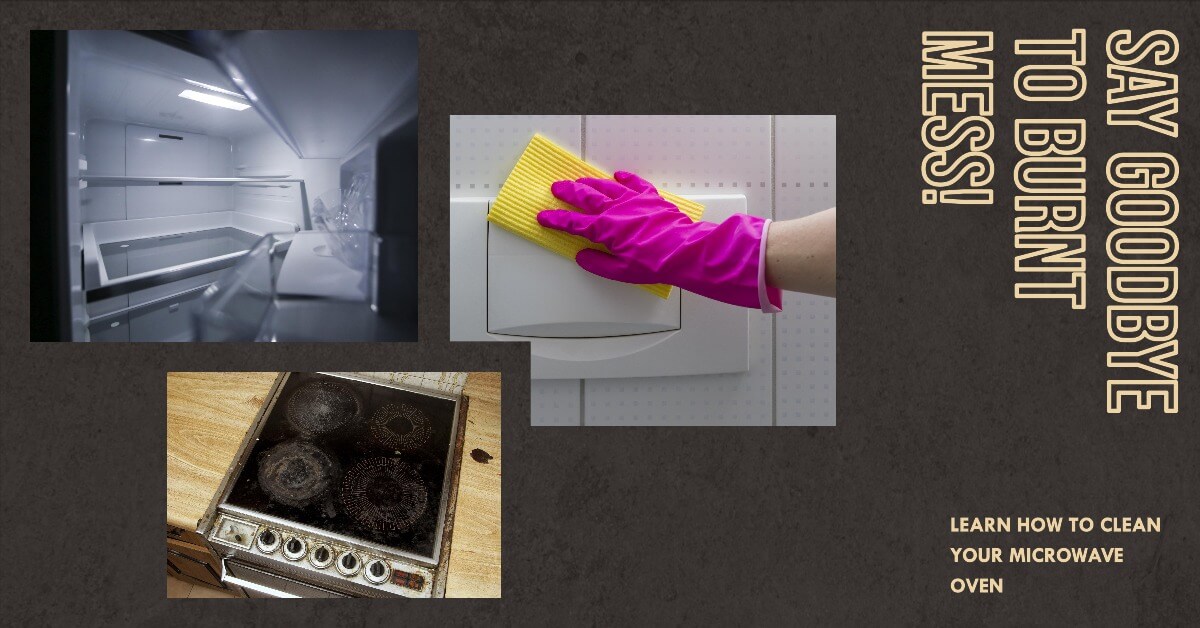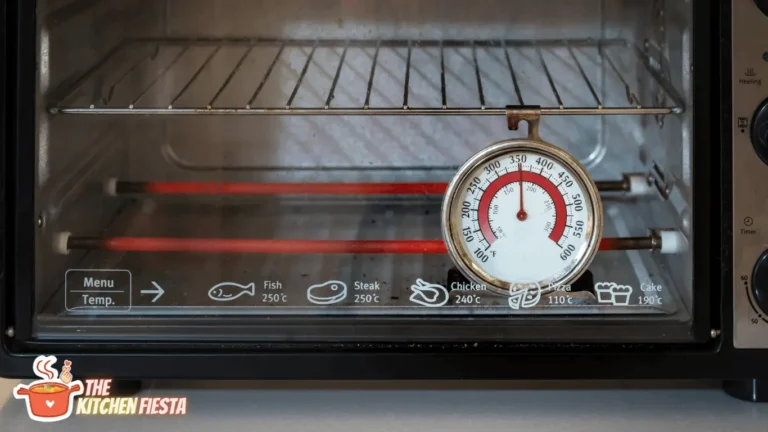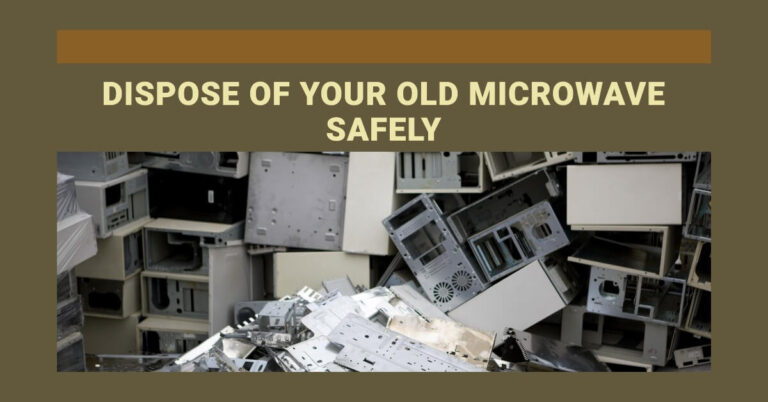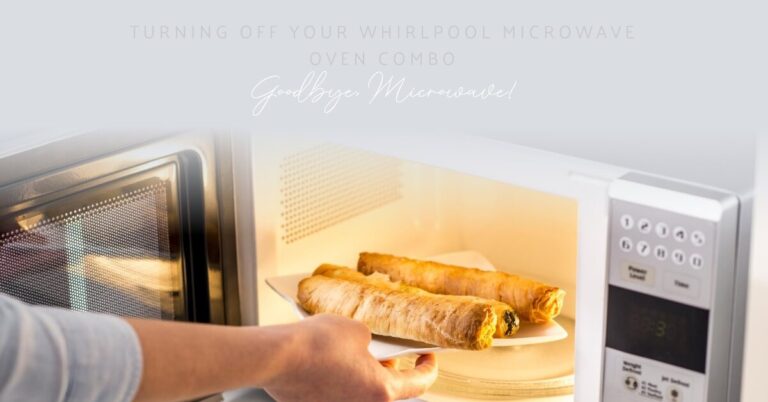How To Clean Burnt Microwave Oven? Easy Cleaning

Have you ever experienced that unpleasant burnt smell coming from your microwave oven? You’re certainly not alone. It’s a common problem many of us encounter when food gets overcooked or spilled inside the microwave.
The burnt odor can linger for days, ruining the appetite of anyone who opens the door. Even worse, burnt stains on the inside walls of the appliance make it look dirty and unappetizing.
But don’t despair! While burnt microwave smells and stains can be annoying, the good news is they can be remedied with some simple cleaning methods.
So how exactly can you get rid of that burnt smell and thoroughly clean the inside of a microwave oven? Keep reading this comprehensive guide to find out.
We’ll cover everything from quick fixes like lemon juice or baking soda to steam-cleaning and stain removal. You’ll also find tips on microwave maintenance and signs that you need a new one.
With the right techniques, you can banish foul burnt odors and have your microwave looking and smelling fresh again.
Why Does Burnt Food Leave Such a Bad Smell in the Microwave?
Before we get into the solutions, let’s quickly look at why burnt food can make your microwave reek in the first place.
When food is overcooked and scorched in the microwave, it leaves behind burnt particles and greasy residue on the walls and interior. This sticks and produces a charred smell.
Some foods are more prone to this effect than others. For example, an overcooked bag of popcorn is a common source of lingering burnt odors. The oils and butter get extremely hot and leave behind a mess.
Other culprits are baked foods allowed to cook too long, spilled soups and sauces that get caked on, and splattered oils or greases from reheating meat or veggies.
Once these food residues are left behind, they continue emitting a foul burnt smell whenever the microwave runs. The smell permeates any new food cooked inside too.
Quick Cleaning Solutions for Removing Burnt Smells
If a burnt spill just happened, act quickly to try minimizing the smell residue left behind. Here are some quick cleaning fixes:
- As soon as you notice a spill, stop the microwave. Carefully remove the hot container. Be cautious of steam and splatter.
- Use a microwave-safe bowl filled with 1 cup of water. Microwave for 2-3 minutes to loosen burnt bits with steam.
- Wipe the interior down immediately with a wet sponge or soft cloth. This can remove some freshly made messes before they stick.
- For more scrubbing power, put 2 tablespoons lemon juice in a microwave-safe bowl with water. Microwave for 2 minutes then wipe down. The citric acid helps cut through grease.
- Alternately, make a mild dish soap solution instead of just water. Use it to wipe down any newly made messes.
These quick damage control methods can help minimize lasting stains and smells, especially if you act right away. But what if the burnt odor has lingered for days? Keep reading for ways to fully eliminate it.
Baking Soda Absorbs Burnt Smells in Your Microwave Oven
One of the simplest fixes for lasting burnt microwave odors is to place an open box or bowl of baking soda inside. Here’s how:
- Put 1-2 cups of baking soda into a wide microwave-safe bowl or baking dish.
- Microwave the baking soda for 2 to 3 minutes until it dries out. This activates it.
- Keep the bowl of activated baking soda inside the closed microwave overnight or for several hours.
- The baking soda will absorb foul odors from the burnt food residues.
- After it has absorbed the smells, remove the baking soda. Then wipe down the interior with a clean damp cloth or sponge.
The baking soda trick works great because it pulls odors out of the air and has a neutralizing effect. For really stubborn burnt smells, you can repeat the process for a few nights. Just replace with fresh baking soda each time.
Steam Cleaning with Lemon Juice Deodorizes Microwaves
Another handy way to banish lingering burnt microwave smells is by steam cleaning the interior with lemon juice. Here’s how it works:
- In a microwave-safe bowl, combine equal parts lemon juice and water. Use 1⁄4 to 1⁄2 cup each.
- Place the lemon juice solution into your microwave oven and heat for 3 to 5 minutes. This steams up the inside.
- Keep the door shut for 5 minutes after it finished steaming. This allows more absorption time.
- Open the door and carefully remove the hot bowl with an oven mitt.
- Use a soft cloth dipped in clean water to gently wipe down the interior.
The heated lemon juice releases cleansing citric vapors that penetrate and neutralize odors. Plus, the steam helps loosen any burnt-on food bits. Wiping it down provides a thorough clean.
For optimal results, repeat the steaming process regularly. Always microwave a lemon juice solution for a few minutes before wiping clean.
Does Vinegar Disinfect and Deodorize Microwaves?
Like lemon juice, vinegar is highly effective at both disinfecting and deodorizing your microwave interior. Here is one simple method:
- Pour 1⁄2 cup white vinegar into a microwave-safe bowl
- Microwave the vinegar for 5 minutes. This steams up the inside with cleansing vinegar vapors.
- Keep the microwave door shut an additional 5 minutes after finishing.
- Carefully remove the hot bowl after time is up.
- Use a soft sponge or cloth dipped in water to give the interior a good wipe down.
The acetic acid in vinegar dissolves stuck-on food residue and cuts through grease. This removes burnt bits that make your microwave smell.
Vinegar’s antimicrobial properties also kill bacteria. This ensures a more sanitary clean and neutralizes odors.
For an extra-strength vinegar cleaner, combine 1 cup vinegar and 1 cup water. Microwave the solution in a large bowl for 7 minutes. Let sit then wipe down.
Using Vanilla Extract to Overpower Burnt Smells
Here’s a clever odor removal trick using vanilla extract:
The strong scent of pure vanilla can mask unpleasant burnt food smells lingering in your microwave oven.
- Pour 2-3 tablespoons of vanilla extract into a small microwave-safe bowl.
- Microwave for 1 minute, then let the vanilla aroma fill the appliance interior.
- Leave the bowl of vanilla extract inside overnight.
- The vanilla fragrance will overpower any burnt odors.
- Wipe the interior as needed in the morning to remove grimy buildup causing smells.
Since vanilla is such a strong scent, it essentially overwhelms any burnt odors. The inside of your microwave will smell sweet and pleasant.
Just avoid heating the vanilla too long or it will evaporate. Reheat for 30 seconds as needed to renew the aroma. It works best left inside overnight.
Effectively Removing Burnt Stains from Microwave Interior
Along with bad smells, burnt food spills often leave behind unsightly stains that require scrubbing. Here are some tips:
For light stains:
- Make a paste of 3 parts baking soda and 1 part water. Apply to stains and let sit 5-10 minutes. Gently scrub then rinse clean.
For tougher stains:
- Mix equal parts lemon juice and dish soap into a paste. Apply and let sit before scrubbing clean.
- Spray with vinegar and scrub with a paste of salt and flour. The abrasives help lift stains.
- Use a non-scratching sponge dipped in dishwasher detergent and hot water.
Burnt grease stains are also removable with some elbow grease and a gentle scrubbing method. Don’t use abrasives that will damage the interior surface.
How to Clean a Very Dirty Microwave with Caked-On Grime
Microwaves that haven’t been cleaned in awhile often accumulate a layer of sticky grime, grease and old food splatters. Here’s how to tackle a filthy microwave interior:
- Combine 1⁄4 cup dish soap with 1 cup warm water in a spray bottle. Shake well.
- Spray the soapy water liberally over walls, ceiling and turntable. Avoid getting it on any electronics.
- Let it soak for 10 minutes. This allows the soap to penetrate caked-on grime.
- Dip a sponge in a vinegar solution for extra cleaning power. Scrub interior surfaces.
- Use a plastic scraper to gently dislodge stuck-on food or grease spots. Avoid scratching.
- Rinse clean with a wet sponge, cloth or more sprayed water. Wipe dry with a soft towel.
Regular steam-cleaning and wipe downs will prevent heavy grime accumulation in the future.
Tips for Keeping Your Microwave Cleaner
Prevention is the best medicine when it comes to microwave cleanliness. Here are some habits to practice:
- Always cover food when microwaving. This prevents splatters that can bake on.
- Wipe up any spills promptly with a damp cloth. Don’t allow food or oils to linger.
- Use only microwave-safe containers. These won’t melt or leak. Never microwave plastics.
- Avoid microwaving anything with sugars in it unattended. Burnt sugars make big messes.
- Take out greasy foods carefully. Cover them to avoid splatters.
- Give the turntable and walls a quick wipe down weekly. Get into a routine.
- Steam clean monthly using water, lemon juice or vinegar to deodorize regularly.
With consistent light cleaning, your microwave will stay fresh and free of major grime buildup.
When to Call for Professional Microwave Cleaning
For home cooks without success removing bad odors and stains on their own, a professional cleaning may be in order. Look for these signs:
- Burnt odors that linger after multiple cleaning attempts
- Heavy grime or rust that is resistant to scrubbing
- Microwave walls with peeling or damaged paint
- An old microwave that never seems clean enough with DIY methods
- Severe stains on walls or ceiling that require commercial products
- Sparking or malfunctioning requiring an expert technician
Professional appliance cleaners have access to powerful degreasing solvents and tools to steam clean, brush and sanitize microwaves thoroughly. They can make even the dirtiest oven look brand new.
Signs It’s Time to Replace Your Microwave
While most microwave cleaning challenges can be fixed with some elbow grease, occasionally an appliance reaches the end of its lifespan if:
- The interior paint or protective coating is worn down or deteriorating
- There is recurring rust, corrosion or cracks despite cleaning
- The door seal is damaged causing it not to close properly
- It stops heating, has electrical issues or needs frequent repairs
If your microwave oven shows these warning signs of aging, it may be time to purchase a replacement rather than sinking more money into repairs.
Investing in a Quality Microwave Oven
When the moment comes to buy a new microwave oven, invest in a solidly constructed one known to last. Here are smart features to look for:
- A durable stainless steel interior that’s scratch resistant
- A well-known brand name with excellent reviews for longevity
- Enough wattage (900+) and capacity for your household’s needs
- Useful settings like a keep warm button and defrost mode
- A removable turntable for easy cleaning access
Higher initial cost often means better quality that lasts over 10 years of daily use. This prevents needing frequent replacements.
Best Practices to Keep Microwaves Clean and Odor-Free
Follow these good habits once you get your microwave cleaned or buy a new one:
- Only microwave dishwasher and microwave-safe containers to prevent mishaps. Never use metal cookware.
- Use lids or microwave splatter covers when reheating foods prone to popping and bubbling over.
- Always stay near the microwave when cooking something new in case you need to stop it from burning.
- Stop food from overcooking to avoid scorching odors. Get to know proper times for what you regularly cook.
- Immediately wipe up any spills or splatters after removing hot food from the microwave.
Staying diligent prevents grime and smells from building up over time. Then a simple wipe down keeps it clean between deeper cleans.
Conclusion: Keep Your Microwave Fresh and Odor-Free
As you can see, mitigating bad burnt microwave smells involves a two part process:
- Using cleaning solutions like baking soda, lemon juice, vinegar or vanilla extract to remove odors.
- Regular maintenance like steam cleaning, immediate spills wipedown and deterring splatter buildup.
While burnt odors can be annoying, they don’t have to mean living with a stinky appliance. With the deodorizing and scrubbing methods outlined, you can get your microwave smelling fresh again.
Going forward, be diligent about light weekly wipe downs. Clean spills right away before they bake on. And use steam cleaning monthly to maintain a clean interior.
With the proper care, your microwave can provide years of odor-free service. No more holding your nose when you reheat leftovers! Just a nice clean-smelling appliance ready for its next task.






